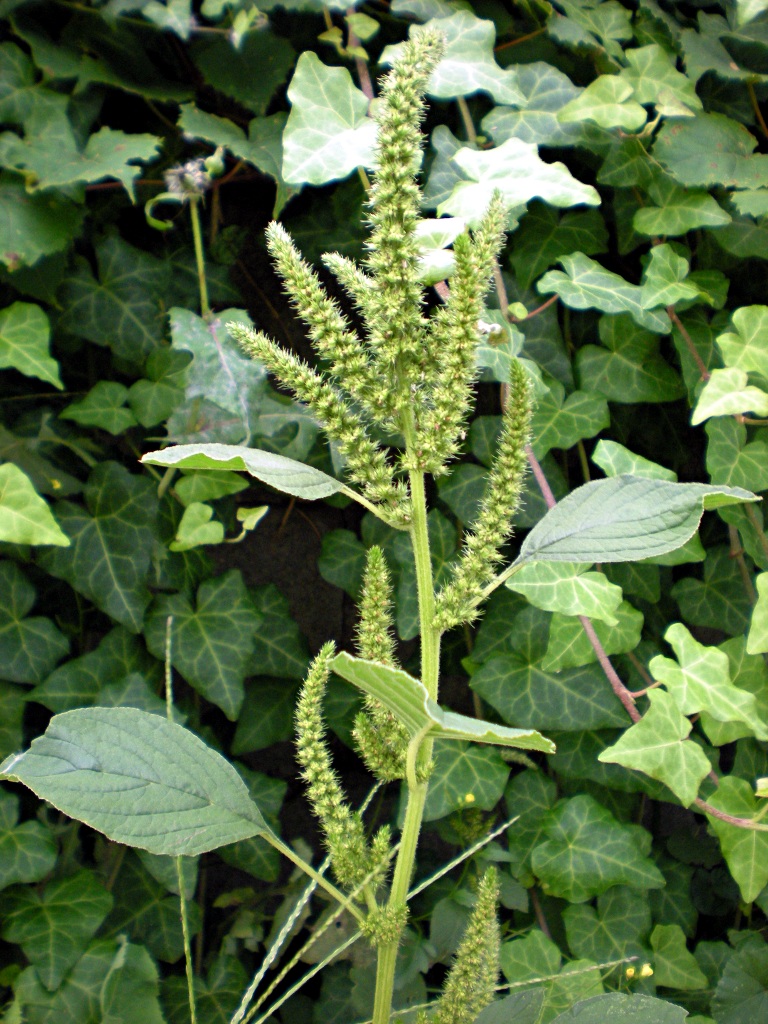
It’s easy to dismiss as just another green weed, but Pigweed is a close cousin of the cultivated amaranths, of which various varieties are grown both for their seeds (from which a flour can be made) and their beauty. If its flowers were any other color, Pigweed might join the ranks of the ornamental amaranths. Here, against a backdrop of dark green English ivy by a sidewalk in Beechview, we can appreciate the elegant architecture of Pigweed, and pause to admire it before we go back to ignoring it as usual.
Gray describes the genus and the species:
AMARANTHUS [Tourn.] L. AMARANTH
Flowers 3-bracted. Calyx glabrous. Stamens 5, rarely 2 or 3, separate; anthers 2-celled. Stigmas 2 or 3. Fruit an ovoid 1-seeded utricle, 2-3-beaked at the apex, mostly longer than the calyx, opening transversely or sometimes bursting irregularly. Embryo coiled into a ring around the albumen. Coarse annual weeds, with alternate and entire petioled setosely tipped leaves, and small green or purplish flowers in axillary or terminal spiked clusters; in late summer and autumn. (Amarantos, unfading, because the dry calyx and bracts do not wither.)
A. RETROFLEXUS L. (GREEN A., PIGWEED.) Roughish and more or less pubescent; leaves dull green, long-petioled, ovate or rhombic-ovate, undulate; the thick spikes crowded in a stiff glomerate panicle; bracts awn-pointed, rigid, exceeding the acute or obtuse sepals. Cultivated grounds, common; indigenous southwestw. (Adv. from Trop. Am.)
